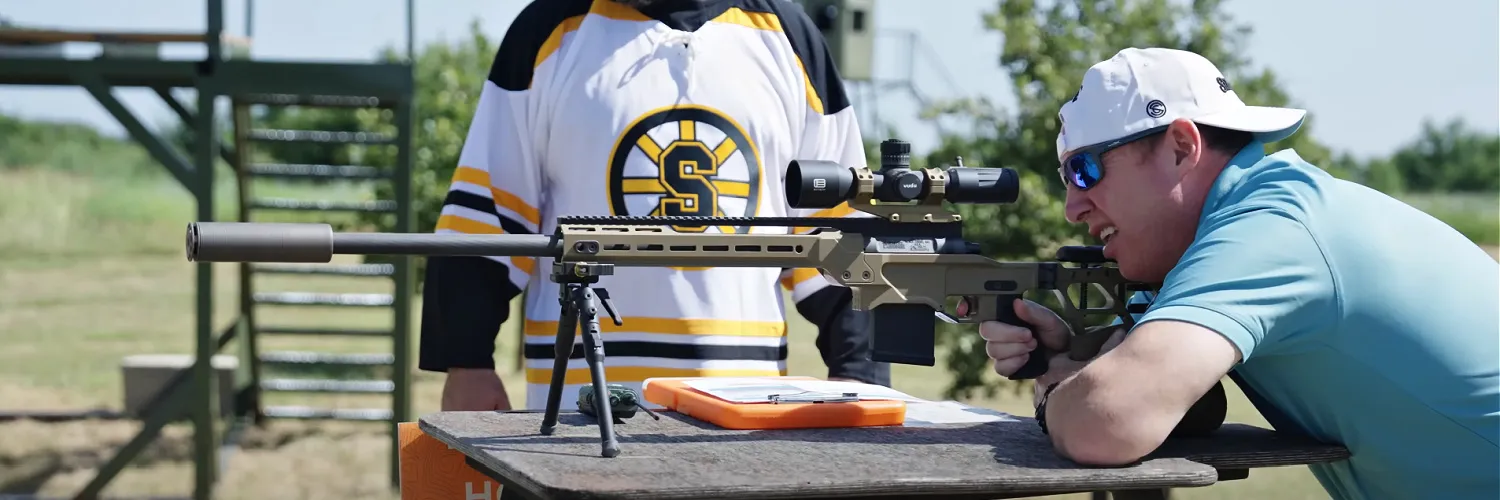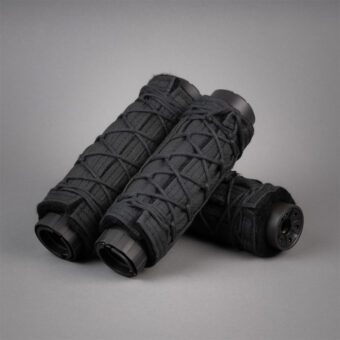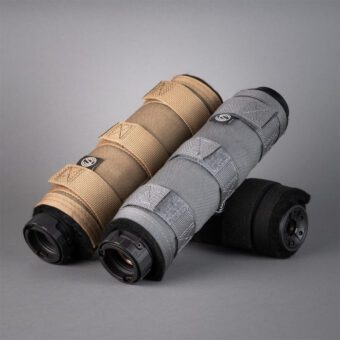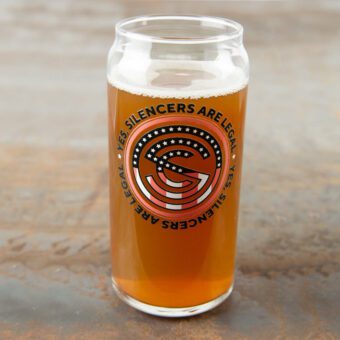Silencers in Cinema
William Lawson
Hollywood filmmakers have long embraced the use of silencers in cinema. The instantly recognizable metal tubes make hitmen, bounty hunters, spies, and vigilantes all the more mysterious and sinister. Movie silencers are so ubiquitous that no explanation is needed as to what they are, what they do, or their intended use. Everyone even knows what they sound like. A barely audible “phhhttt,” and the target slumps over, no one else the wiser, even if they are standing in the next room.
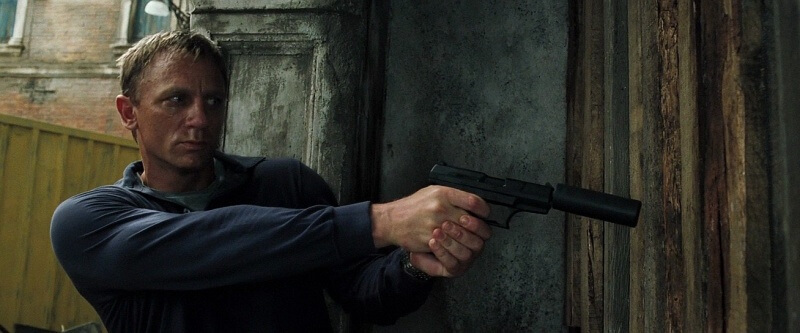
The problem is that the “phhhttt” is just a Hollywood sound effect, not a real gun firing suppressed. Of course, accurately portraying suppressed weapons would detract from the plot line, so there’s that. I long ago got over nitpicking all but the most egregious Hollywood firearm inaccuracies.
Silencers are in so many movies that it’s literally impossible to cover them all. Today we’re going to look at four film franchises that offer different takes on suppressors, who uses them, and how. Let’s start with an easy one.
James Bond
The world’s best-known “secret agent” is Ian Fleming’s James Bond, Agent 007. Watching the Bond movies, I always wondered how such an elite operative was known by name to so many people outside his organization. I suppose Bond is simply good enough to overcome what would be a death sentence in real life. But no one will ever confuse Bond movies with real life, and that’s what makes them so much fun.
As a top shelf operative of Her Majesty’s Secret Service, Bond has access to all the latest and best equipment, even though his trademark Walther PPK is an almost 100-year-old design whose parent firearm, the PP, goes back even further. To be fair, the franchise tried to update Bond’s sidearm to the Walther P99 at one point. Fans revolted, so they went back to the smaller, sexier PPK.
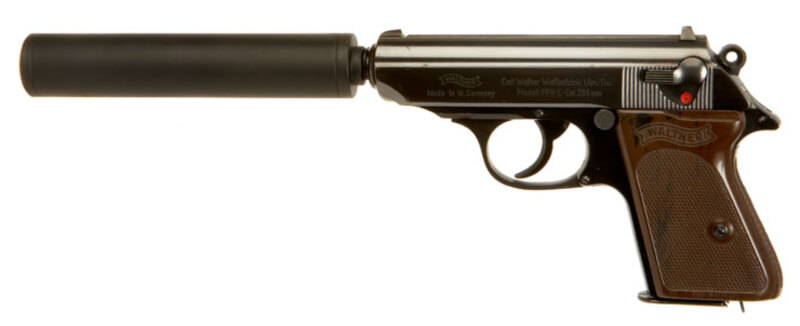
The PPK, however, sure looks cool with a silencer attached. Every Bond actor but one, George Lazenby in 1969’s On Her Majesty’s Secret Service, suppressed his weapon at some point, usually more than once. Lazenby likely would have as well had he stuck with the role past that one appearance.
And no Bond movie is complete without a thoroughly evil super villain such as Goldfinger. And, of course, Goldfinger and his contemporaries have sinister henchmen like Oddjob, who sports a suppressed pistol in the movie named for his employer.
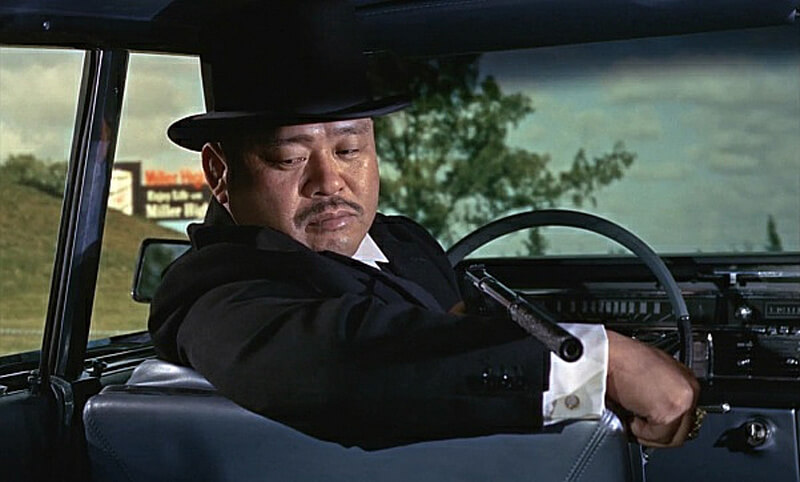
Silencers are just one more exotic element to the Bond world’s fantastical nature. Bond’s armorer, “Q,” comes up with all manner of ingenious weapons and gadgets, but the suppressor is a commonly known accessory that elicits a planned audience response. Whenever a character pulls out a suppressed weapon, everyone knows what’s coming next.
Sherlock Holmes
Sherlock Holmes’s cinema heyday was during the 1940s, starring Basil Rathbone as the great detective. Many consider Rathbone’s portrayal to be the standard for Holmes. Those films moved Holmes and Dr. Watson forward in time some 50 years from their original Victorian stomping grounds to often chasing nefarious Nazis during World War II.
I cannot say for certain how often those films featured suppressed firearms because most of them are not easily available these days. I was unable to find any examples. But if we fast forward some 65 years to 2009, we find two interesting silencers in the Holmes franchise starring Robert Downey, Jr. in the title role.
I say they are interesting because the films move Holmes back to his literary time of the early 1890s. As far as I can tell, the first silencer was patented by a Swiss inventor named Jakob Stahel in 1892. It was intended for killing cattle. I don’t really know why one would need a silencer specifically for killing cattle, but that’s what the patent says. It also states that the silencer could be adapted for other firearms. Hiram Maxim invented the first commercially successful silencer in 1902, beginning the silencer’s technological evolution that continues to this day.
The issue is that the first Downey, Jr. film takes place in 1891. Of course, Hollywood always plays fast and loose with historical facts, which is fine most of the time, including this instance. I will say, however, that the silencer in question appears to be homemade. Since it belongs to the undeniably brilliant Holmes himself, perhaps we can infer that Baker Street’s most famous resident concocted it himself.
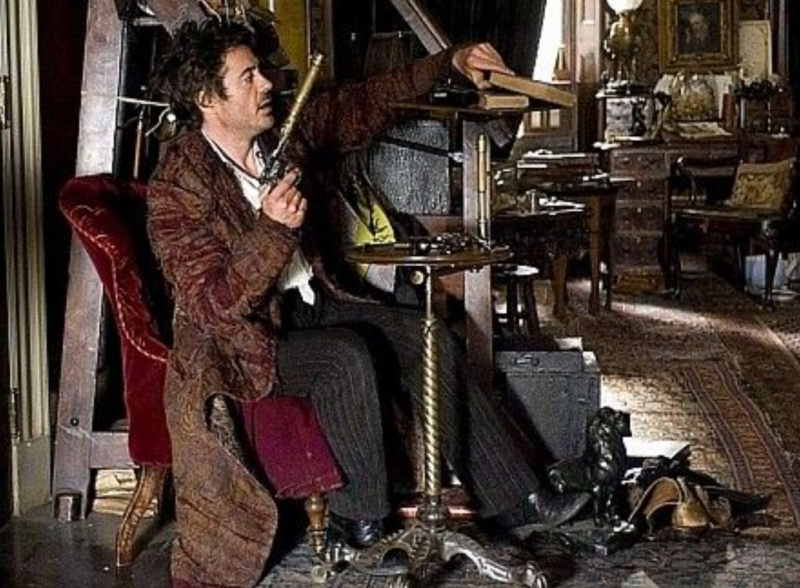
Another aspect of making the silencer more believable is that it doesn’t appear to work very well, if at all. It seems that Holmes employs it to hide (rather unsuccessfully) his sometimes-erratic behavior, which is true to Sir Arthur Conan Doyle’s original stories. In this case, Holmes uses a (supposedly) suppressed revolver to shoot a “V.R.” pattern in his apartment wall. “V.R.” stands for “Victoria Regina,” or Queen Victoria, of whom he apparently approves. This strange habit came directly from the original stories.
But even this presents anachronistic problems, aside from the fact that silencers had yet to be invented. Holmes uses a Russian M1895 Nagant revolver for his deed. This is reasonable since, as far as I know, the 1985 Nagant is the only commonly available revolver that can be suppressed, thanks to its unique operating system. But the Russian Army didn’t even adopt the Nagant until 1895, four years after the film’s setting. And the revolver itself has a visible manufacture date of 1941 on the frame, along with the famous Tula Armory Star. And finally, an Englishman in 1891 would hardly have access to a Russian Army revolver, even if it did exist.
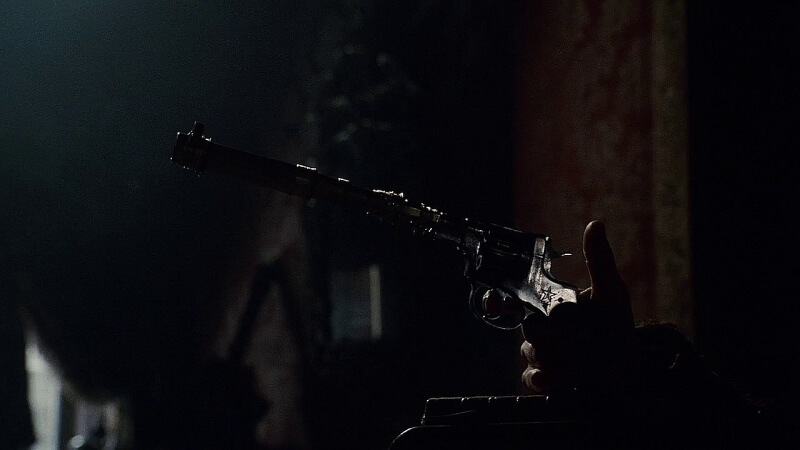
But honestly, this is nitpicking. The filmmakers needed an easily recognizable plot device to convey the notion that Holmes was engaging in odd behavior he wanted to hide from his neighbors. A silenced revolver, anachronistic or not, fit the bill.
They took similar artistic license in the sequel, Sherlock Holmes: Game of Shadows. In this case, the silencer is far more interesting, and even less believable for those in the know. It’s still pretty cool. Holmes’ arch enemy, Professor Moriarty, is trying to start a world war from which he will profit enormously through his investments in various armament manufacturers.
To that end, Moriarty employs a professional assassin to eliminate prominent policy makers who can forestall the march to war. The assassin uses a custom suppressed Martini-Henry sniper rifle. This suppressor would have to be capable indeed, given the Martini-Henry’s large caliber and use of black powder cartridges.
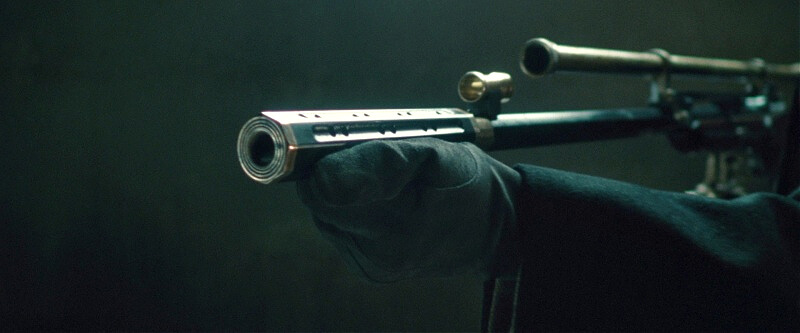
The Martini-Henrys of the time used a 485-grain bullet in a rolled brass .577/450 black powder cartridge. They were said to be capable of stopping a hippopotamus at 80 yards. Of course, dealing with that massive bullet is a mere matter of physics. Perhaps the brilliant Moriarty figured it out. But black powder’s fouling effects make it unlikely the silencer could be used more than a couple of times without a thorough cleaning. Perhaps not more than once. But then again, the Martini-Henry was a single-shot breechloader. Maybe it could work. The film used a prop shop suppressor, so there are no design specs available. Just fun fiction.
Either way, the assassin was a crack shot and didn’t need multiple rounds. Shooting well is a valuable Hollywood assassin skill, which leads to our next film franchise…
John Wick
The John Wick films chronicle a top assassin’s war with the Russian Mob and other evil societal elements. The moral, as I see it, is don’t kill other people’s dogs. Being at his profession’s pinnacle, Wick uses lots of firearms, some of which are suppressed.
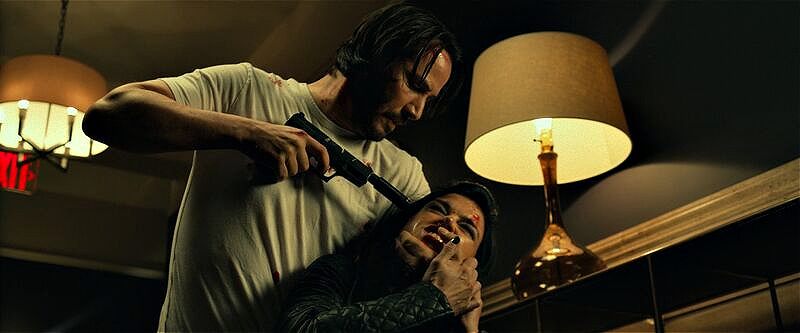
Unlike the Sherlock Holmes movies, John Wick makes a real effort to portray real firearms wielded properly, if sensationally. Keanu Reeves prepared for the title role by training intensively with such professional shooters as Taran Butler, so his gun handling is authentic. I think that’s one reason the movies are so popular. Reeves worked hard and is said to still compete in 3-gun matches as he has time. Good stuff.
Among the franchise’s many suppressed firearms, one stands out to me because of its uniqueness. John Wick Chapter 4 features a bad guy called “Mr. Nobody.” Mr. Nobody totes a custom Marlin 1894 lever gun equipped with a SilencerCo ASR 3-port muzzle brake on which a suppressor can be, and is, mounted. Being a lever gun enthusiast, I love it. And the authentic application of the ASR mounting system is a nice touch with which Hollywood seldom bothers.
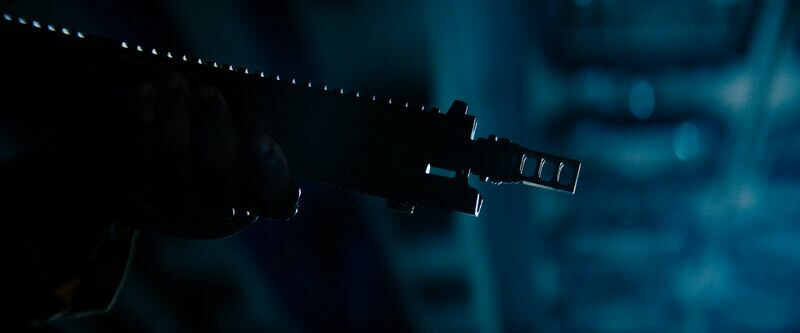
John Wick is so well done that I have nothing to complain about, except perhaps that for professional bad guys, you’d think they’d be more capable of taking down one guy when they have a clear numerical advantage. But such is the righteous wrath of a dude who just buried his wife and his dog, I guess. Speaking of revenge…
The Boondock Saints
Connor and Murphy McManus are my favorite Hollywood vigilantes. I like vigilante movies in general, as do many folks. I think the appeal is that sometimes we like to see very bad people get what they richly deserve. But such movies are often disturbing, like the original Charles Bronson Death Wish, Robert Deniro’s Taxi Driver, and Michael Caine’s underappreciated Harry Brown.
The Boondock Saints has plenty of blood, but it’s more lighthearted, for a vigilante movie anyway, and alleviates the violence with some well-timed and well-executed humor. The brothers and their accomplices are memorable characters with whom it’s easy to sympathize.
I don’t find the movie or its sequel, All Saints Day, to be disturbing at all because they are ultimately terribly unrealistic. But they’re so much fun that suspending disbelief isn’t difficult. This aspect is evident early on as Connor and Murphy waltz into an illegal arms dealer right in the heart of Boston to outfit themselves for their mob vendetta. They leave with two suppressed Beretta 92 pistols each, along with myriad other goodies, including rope, which Connor insists is vitally important.
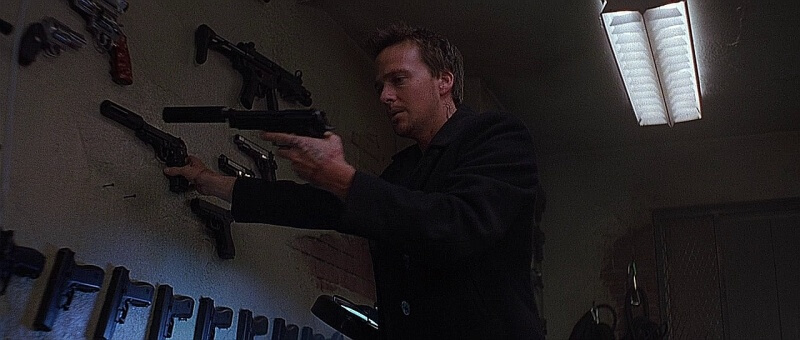
The brothers put those Berettas to good use throughout the film, eventually letting their buddy Rocco in on the fun. Boston Mob wise guys beware. Those guns are instrumental in the movie’s climactic scene, as they go after the Boston underworld’s top dog himself.
The sequel is nearly as good as the first movie, a rarity, and the brothers once again visit their arms dealer friend, whose business has boomed considerably due to his known association with “the Saints,” as Connor and Murphy are now known. Of course, that known affiliation has not resulted in an ATF raid. The Saints and their new accomplice, Romeo, are given special treatment as “preferred customers.” This scene is memorable as Romeo discovers a pair of suppressed 1911 pistols that are just perfect for a man who “hails from a colorful people.” Romeo is really pretty hilarious.
Aside from John Wick, this franchise might represent Hollywood’s coolest use of silencers. It’s hard to beat the brothers’ surprise entrance at the Russian Mob meeting, Rocco’s takedown of his despised boss, and Romeo’s grand entrance in the sequel. They would be great scenes either way, but those silencers just make them better.
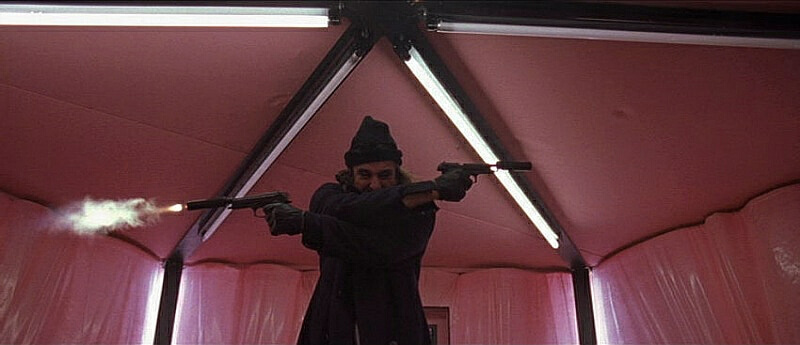
A Taste of the Exotic
As noted, Hollywood directors often use silencers as plot devices. Everyone knows what’s coming when they see that tube attached to a firearm. Silencers also add a seeming touch of competency to the characters wielding them. Anyone with a suppressed firearm is understood to be someone to reckon with.
Even if “Hollywood quiet” isn’t really a thing, it serves to tell good stories. And good stories are what Hollywood is about. Uncommon, even exotic, weapons and devices add to that. James Bond, anyone? After all, who wants to watch a movie about mundane stuff? Not me. Silencers offer that exotic feel and help us quantify the characters who use them. Usually, that’s good storytelling, which is something I can always get behind.



